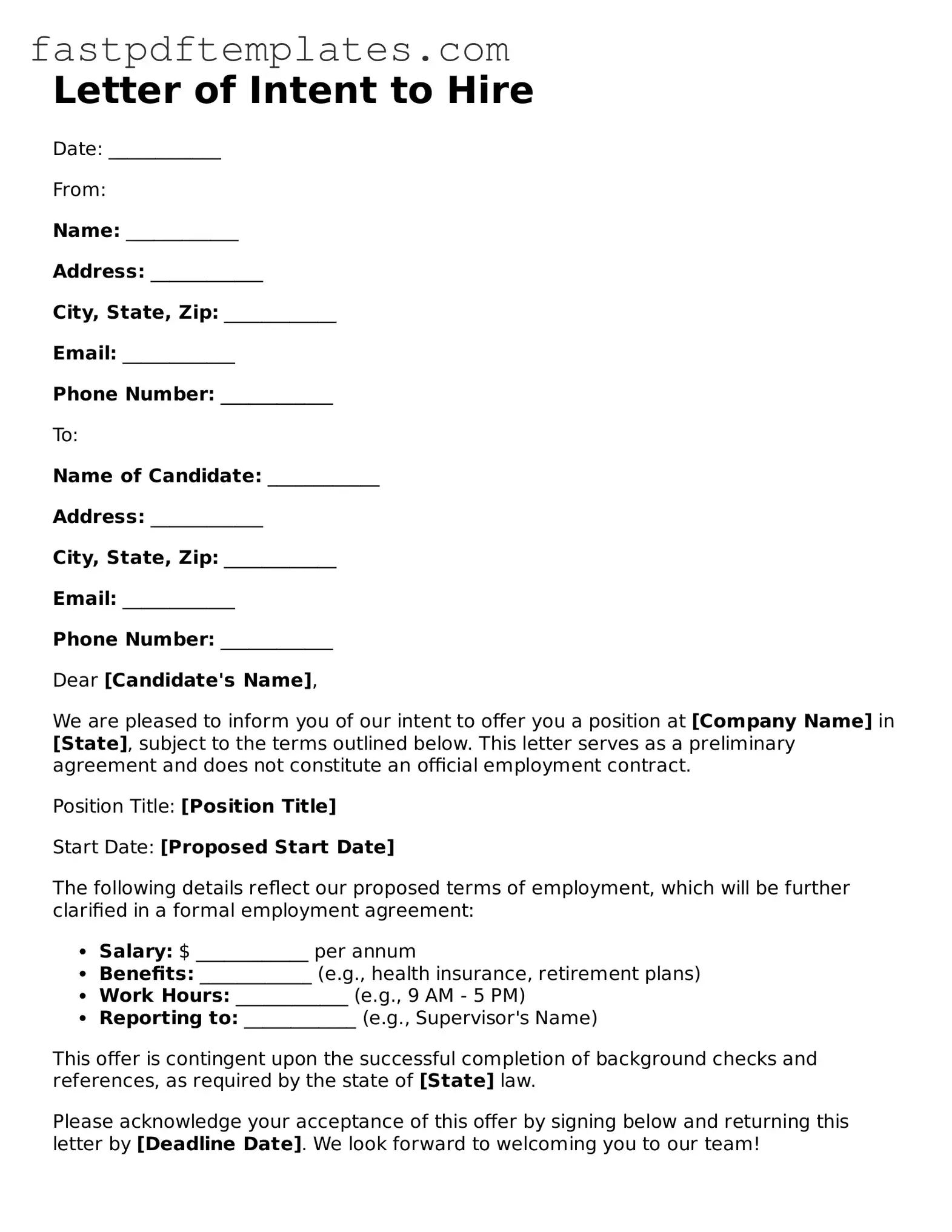Letter of Intent to Hire
Date: ____________
From:
Name: ____________
Address: ____________
City, State, Zip: ____________
Email: ____________
Phone Number: ____________
To:
Name of Candidate: ____________
Address: ____________
City, State, Zip: ____________
Email: ____________
Phone Number: ____________
Dear [Candidate's Name],
We are pleased to inform you of our intent to offer you a position at [Company Name] in [State], subject to the terms outlined below. This letter serves as a preliminary agreement and does not constitute an official employment contract.
Position Title: [Position Title]
Start Date: [Proposed Start Date]
The following details reflect our proposed terms of employment, which will be further clarified in a formal employment agreement:
- Salary: $ ____________ per annum
- Benefits: ____________ (e.g., health insurance, retirement plans)
- Work Hours: ____________ (e.g., 9 AM - 5 PM)
- Reporting to: ____________ (e.g., Supervisor's Name)
This offer is contingent upon the successful completion of background checks and references, as required by the state of [State] law.
Please acknowledge your acceptance of this offer by signing below and returning this letter by [Deadline Date]. We look forward to welcoming you to our team!
Sincerely,
[Your Name]
[Your Position]
[Company Name]
[Company Address]
[Company Phone Number]
Accepted by:
Candidate's Signature: ______________________ Date: ____________
If you have any questions or require further information, please do not hesitate to reach out.
